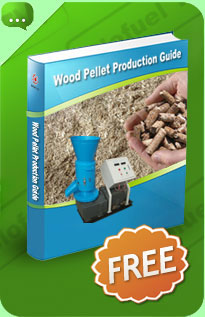Pelletizing Process
Pelletizing process is defined as an agglomeration process whereby an amorphous mass of finely divided particulates, such as dust, powder, fume, is formed into a pellet, a ball or a granule in the presence of moisture added during the process. If required for increased product hardness or process considerations, a solid or liquid binder is added before or during pelletizing.
As fines are moistened and rolled in an inclined, rotating drum or disc pelletizing apparatus, loose pendular, funicular and capillary bonds are formed between the grains of the material, causing nucleation into small seeds and gradual growth by packing, densification and layering as the loose solids-air-water bond is replaced by a dense solids bond with a moisture film between particles. As more fines are continuously fed into the pelletizer, spherical pellets of proper size are discharged over the edge of the drum or pan, while smaller pellets and growing seeds are retained in the bottom.
Pellet size is controlled by the angle and speed of the pelletizer, placement of the feed and location of the water-sprays, as well as the amount of liquid added at any given location. Thus the retention time and availability of dry fines and moisture can be controlled. The pellets are uniform in size due to the natural classification action of the pelletizer. Usually subsequent screening is therefore not required.
Materials as light and fluffy as silica fume (10 lbs./cu. ft.) and as heavy as tungsten carbide (200 lbs./cu. ft.) can be pelletized in this manner. Other typical pelletizing applications include mineral concentrates, coal, coke, char, fine chemicals, food and feed materials, fertilizers, glass and ceramic materials, kiln and furnace dust from baghouses and precipitators. Feed moistures from bone-dry to filter cake can be handled. If required, a conditioning step can be added to prepare or mix feed materials.
Advantages of Pelletizing
1. Raw material preparation for process improvement due to better surface area of pellets for sintering, drying, melting, combustion or for improved feed preparation for blending, pressing and molding operations.
2. Size increase for bulk materials handling, transfer and shipping, such as coal, carbon black, ores, chemicals, fertilizers.
3. Pelletizing to improve market appeal and physical appearance, such as certain instant foods, detergents and other consumer products.
4. Dustless disposal of superfine precipitator and baghouse dust, as with steel mill waste, ferroalloy dust, silica fume, cement and lime kiln dust and friction material waste. This may be very critical for hazardous and toxic waste fines disposal.
5. Recycling to reclaim useful mineral, metal and fuel values from steel mill revert fines, coal and coke fines, copper precipitates, kiln dust, smelter flue dust and other materials collected during the process.
6. Pelletizing in combination with mixing, such as dry and liquid wastes and/or chemical reaction.

